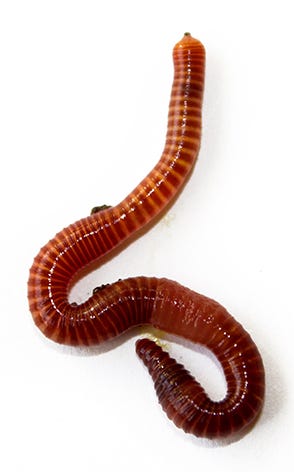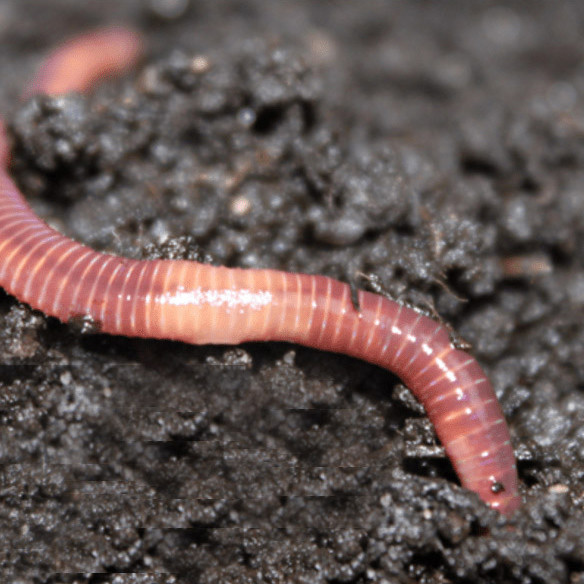Whatever You Need to Know Concerning Red Wigglers for Composting
Red wigglers, or Eisenia fetida, play a pivotal role in the realm of composting, transforming organic waste into important soil changes. Their special organic qualities allow them to grow in numerous problems, making them an ideal choice for both beginner and skilled composters alike. Comprehending their demands and benefits is important for establishing a productive vermicomposting system. The procedure of setting up a worm bin and maintaining it can present difficulties. To successfully harness the capacity of these worms, one should explore the intricacies of their treatment and monitoring.
What Are Red Wigglers?

(buy red wiggler worms)
Indigenous to The United States and copyright, red wigglers are surface-dwelling microorganisms that favor damp, cozy habitats rich in decomposing raw material. Their diet regimen is composed mostly of rotting plant material, food scraps, and other natural particles, which they take in and break down efficiently. As they absorb this product, they create nutrient-rich castings that enhance dirt fertility.
Red wigglers are hermaphroditic, having both male and female reproductive body organs, and can reproduce rapidly under optimum conditions. Generally, red wigglers are vital contributors to the procedure of recycling organic waste right into beneficial compost.
Benefits of Utilizing Red Wigglers
Making use of red wigglers in composting systems provides many benefits that enhance both the effectiveness of waste monitoring and the quality of the resulting compost. These worms, clinically called Eisenia fetida, are particularly effective at breaking down raw material, transforming kitchen scraps and yard waste into nutrient-rich garden compost at an increased price.
Among the primary benefits of using red wigglers is their ability to take in big amounts of natural product, usually processing their weight in food waste daily. This high consumption rate leads to faster decay and decreases the volume of waste sent out to garbage dumps. Moreover, the spreadings generated by red wigglers are abundant in essential nutrients, advantageous microorganisms, and enzymes, making them an outstanding fertilizer for gardens and plants.
In addition, red wigglers grow in a range of atmospheres, making them adaptable for both interior and outdoor composting systems - red wigglers. Their presence in a compost bin aids to freshen the product, stopping smells and advertising a healthy and balanced composting process. In general, employing red wigglers not just adds to effective waste management yet additionally supports sustainable horticulture methods through the manufacturing of high-grade garden compost
(Raleigh Worm Farms)
Setting Up Your Worm Bin
To effectively establish up a worm container, it is crucial to choose a suitable container that satisfies the demands of red wigglers while giving a conducive environment for composting. An appropriate bin can be made from plastic, timber, or steel, with a capability of at least 1 square foot for each extra pound of worms.
Make sure the container has ample water drainage openings to stop excess moisture, as red wigglers thrive in a damp, but not waterlogged, environment. red wigglers. The bin should also be aerated to give enough air movement, preventing anaerobic problems that might hurt the worms
A suitable place for the worm bin is an awesome, dark area, without direct sunlight and severe temperature levels, as red wigglers favor a temperature level series of 55 to 77 degrees Fahrenheit.
Before presenting the worms, prepare bed linens products such as shredded newspaper, cardboard, or coconut coir, which will give both environment and food. Moisten the bedding lightly to develop an inviting atmosphere for the worms. Lastly, consider positioning a cover on the bin to maintain moisture and minimize insects, while ensuring it can be conveniently eliminated for maintenance.
Feeding and Treatment Guidelines
Feeding red wigglers is an essential facet of preserving a healthy composting system. These worms prosper on a diverse diet regimen, mostly composed of natural materials such as fruit and veggie scraps, coffee grounds, and smashed eggshells. It is vital to stay clear of feeding them meat, dairy products, and oily foods, as these can create undesirable smells and draw in pests.
When presenting food to your worm container, slice or shred products into smaller sized pieces to promote quicker decomposition. Beginning with percentages to gauge the worms' usage rate, slowly raising the quantity as they adjust. It is advisable to alternating feeding locations within the bin to urge comprehensive blending and aeration of the garden compost.

Troubleshooting Common Issues
Preserving a prospering worm composting system can often provide difficulties that require attention and troubleshooting. Usual concerns consist of an unpleasant odor, which often indicates overfeeding or the visibility of anaerobic problems. To fix this, decrease the quantity of food included and ensure correct oygenation by blending the bed linen product.
One more frequent trouble is the getaway of worms from the bin. This can take place because of excessive dampness or improper ecological conditions. Frequently check the moisture degrees, going for a wet however not soggy uniformity, and preserve optimal temperature levels between 60-80 ° F(15-27 ° C )to develop a comfortable habitat for your red wigglers.
Parasites, such as fruit flies, can likewise attack worm bins. red wigglers. To battle this, cover food scraps with a layer of bed linen or shredded paper to deter flies from laying eggs. In addition, guarantee that any kind of food added is fresh read review and free from mold, which can bring in undesirable pests
Lastly, if your worms seem inactive, look for stress aspects such as temperature level changes or poor wetness. Resolving these typical concerns will assist keep a healthy and efficient worm composting system.
Verdict
In recap, red wigglers, or Eisenia fetida, play an essential duty in lasting waste monitoring via vermicomposting. Correct arrangement and upkeep of a worm container, along with adherence to feeding standards, make certain a thriving ecosystem that minimizes landfill contributions.